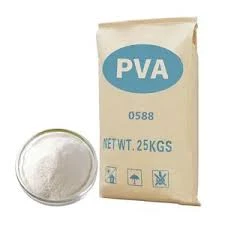Understanding the Pricing of Cellulose Ethers
Cellulose ethers are a group of cellulose derivatives that play a crucial role in various industries, including pharmaceuticals, food, cosmetics, and construction. As the demand for these versatile compounds continues to grow, understanding their pricing dynamics becomes increasingly important for manufacturers, suppliers, and consumers alike. This article delves into the factors influencing the price of cellulose ethers, the current market trends, and future outlooks for this essential material.
What Are Cellulose Ethers?
Cellulose ethers are modified forms of cellulose, produced by chemically reacting cellulose with etherifying agents. Some common types of cellulose ethers include hydroxypropyl methylcellulose (HPMC), carboxymethyl cellulose (CMC), and ethyl cellulose. These compounds are known for their ability to form gel-like structures, retain moisture, and act as thickening or stabilizing agents. Their applications are vast, ranging from enhancing the texture of food products to serving as binders in pharmaceutical formulations.
Factors Influencing the Price of Cellulose Ethers
1. Raw Material Costs The primary raw material for cellulose ethers is cellulose, which is derived from wood pulp or cotton. Fluctuations in the prices of these raw materials directly impact the production costs of cellulose ethers. Any disruption in the supply chain or changes in regulations affecting raw material harvesting can lead to price volatility.
2. Production Processes The manufacturing of cellulose ethers involves complex chemical processes that require specialized equipment and skilled labor. Advances in technology may reduce production costs, but initial investment in this technology can be significant. Any changes in production efficiency or innovations can, therefore, play a role in pricing.
3. Market Demand The demand for cellulose ethers varies by industry. For instance, the construction sector's demand for cellulose ethers as additives in smooth finishing materials can cause seasonal price variations. The pharmaceutical industry's increasing focus on excipients that enhance drug solubility and stability can also lead to increased demand and price hikes.
4. Geopolitical Factors Global trade policies, tariffs, and geopolitical tensions can affect the import and export dynamics of cellulose ethers. Countries that rely heavily on the import of raw materials or finished products may experience price increases due to tariffs or trade restrictions.
cellulose ether price

5. Sustainability Trends With growing awareness of environmental issues, many companies are shifting towards sustainable practices and raw materials. The transition to more eco-friendly production methods may initially increase costs but can be seen as a long-term investment that could stabilize prices in response to consumer demand for sustainable products.
Current Market Trends
As of 2023, the cellulose ether market is witnessing robust growth driven by various factors. The food industry continues to show significant demand due to rising consumer preferences for healthy and convenient food products that often utilize cellulose ethers as thickeners and stabilizers. The pharmaceutical industry's expansion, driven by innovative drug formulations and a growing aging population, is further propelling market growth.
Moreover, the cosmetic industry is also embracing cellulose ethers for their ability to improve the texture and consistency of products. This rising demand across various sectors leads to a positive market outlook, but price fluctuations remain a concern.
Future Outlook
Looking ahead, the pricing of cellulose ethers will likely remain volatile, influenced by the aforementioned factors. However, the trends towards sustainability and technological advancement may eventually stabilize prices as production processes become more efficient and environmentally friendly.
Investors and stakeholders in the cellulose ether market should stay informed about raw material pricing, technological developments, and changing consumer preferences. Understanding these dynamics will be crucial for strategic decision-making in purchasing, production, and marketing cellulose ethers.
In conclusion, the price of cellulose ethers is shaped by a multitude of interconnected factors including raw material costs, production processes, market demand, geopolitical elements, and sustainability trends. As industries continue to evolve and innovate, staying attuned to these trends will be essential for anyone involved in the cellulose ether market.
-
A Comprehensive Guide to Methyl Ethyl Hydroxyethyl Cellulose: Applications and Industry InsightsNewsNov.24,2025
-
Understanding Methyl 2 Hydroxyethyl Cellulose: Uses, Benefits & Industry InsightsNewsNov.24,2025
-
Hydroxyethyl Methyl Cellulose HEMC: Industrial Uses, Benefits & Future TrendsNewsNov.23,2025
-
HEMC Cellulose: Versatile & Sustainable Industrial Polymer | YoungcelNewsNov.23,2025
-
Methyl Hydroxyethyl Cellulose: Versatile Building Block for Industry & SustainabilityNewsNov.23,2025
-
CAS 9032 42 2: Understanding Polyvinyl Alcohol's Impact on Industry & SustainabilityNewsNov.22,2025




